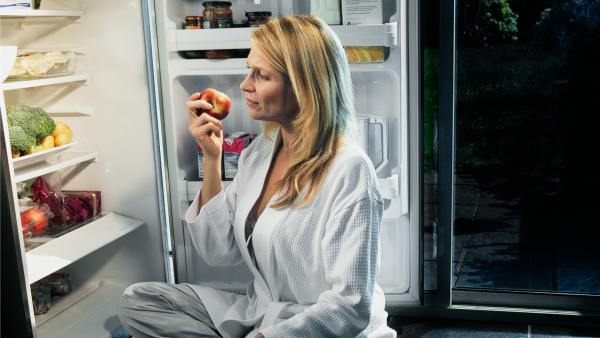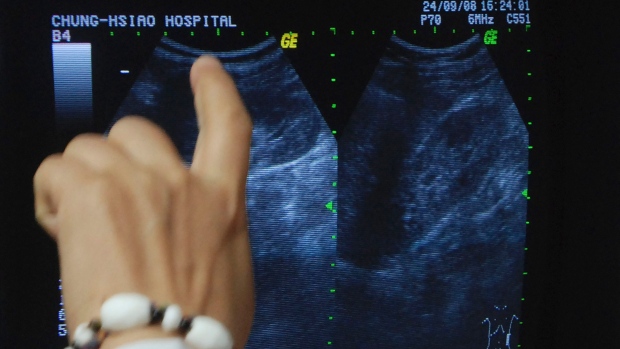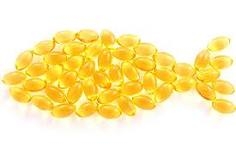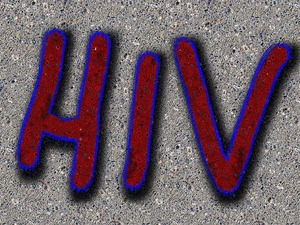Do you suffer from the most common eating disorder?
Have you ever done that thing with food? You know, that thing where you’ve been dieting all day, and you’ve been doing awesome… not one carb, drinking nothing but water with lemon squeezed in, even power walking on your lunch break… and then comes the night
You’re ready to go to sleep. You’ve had an awesome day, you stayed on your diet all day long. The only problem is you can’t sleep. You lay there listening to your stomach grumble, feeling tired, very, very tired. But you’re also wired and your eyes are wide open. You’re staring at the ceiling, obsessing about food and trying really hard not to get out of bed. Finally you get up and go to the fridge. Just a slice of turkey will kick this. Maybe a bite of cereal. Maybe a bowl of cereal. Maybe another bowl of cereal. Maybe the rest of the pint of ice cream. Maybe a peanut butter sandwich or two. And this all happened in front of an open refrigerator in just under 30 minutes. Been there? Been there a lot? If so, you might be dealing with Binge Eating Disorder.
Binge Eating Disorder is the most common eating disorder, affecting 5.5 percent of the adult population. So, if you are doing this, you are not alone. You feel alone because you do these behaviors in secrecy, but so are millions of other people. When you suffer from binge eating and emotional eating attacks, food is your drug. You try to stop using by going on diets, but inevitably you wind up back on the streets… or in the Oreos.
But there is hope and it is totally possible to be free from this. Here are some tips to break free from binge eating, stress eating, compulsive eating and emotional eating.
1. Stop dieting right this instant
Diets give you a false sense of control. You’re feeling bad about yourself and you vow to go on a diet. The diet makes you feel as though you have some control but inevitably you don’t. Every time you go on a diet, you set yourself up for bingeing. The 20-billion-dollar weight-loss industry thrives when you mess up your diet and sign up for a new one. Instead, vow to leave the industry behind and get off the hamster wheel of bingeing and dieting.
2. Learn intuitive eating
It’s a little more complex than “eat when you are hungry and stop when you are full.” Someone who has been a chronic dieter doesn’t quite know when they are hungry because they have fought to push their hunger away for so long. The best thing to do is to is to start just by paying attention to what is going on in your body. Remember that your body is constantly looking for a fuel source to run on. When it is digesting food, it has fuel. When you are no longer digesting, you are hungry and you need fuel; you are running on empty. Take a few moments out of your day, several times a day, to check in with your body and notice how it’s feeling. When you begin to feel empty in your belly, but before you get to the point of really having your fuel light on, check in with your body and ask it what it needs. Just close your eyes, put your hand over your heart, let your mind sync up with your heartbeat and ask “what do I need?”; your body will tell you.
3. Let go of black-and-white thinking
Chronic dieters tend to have an all-or-nothing approach to food. They talk about “good” days and “bad” days. Like if you were to have a day where you ate ice cream or cookies it would be a bad day, if you had a day where you ate salads and drank water, it would be a good day. Food does not hold a moral value. A cookie doesn’t make you a bad person and a salad doesn’t make you a good person. When a chronic dieter goes off her diet by eating a couple of cookies, it can make her feel like, “Oh well, the whole day is ruined, I might as well finish off the bag now.” When you feel as though you’ve behaved in an unhelpful way with food (unintentionally eating an entire box of cookies), rather than spending the rest of the day bingeing ask yourself, “what’s the next right thing that I can do?” It might be going out and taking a walk, it might be brushing your teeth, it might be calling a friend or making your bed. Rather than making it worse for yourself, make it better. Do the next right thing. Get right back on your bicycle and ride rather than spending the rest of the day laying on the ground.
4. Find support
Talk to a therapist who specializes in treating eating disorders, or find other people who are dealing with the same thing that you are. You can search for a binge eating support group either online or in person. You can do a 12-step group or go to ANAD to find free in-person groups. Because Binge Eating Disorder thrives in isolation, it suffocates when the light is shined on it.
5. Keep binge food out of your home
When you are beginning the process of letting go of binge eating, it is best to take the binge foods out of your house. Make your house a safe zone for a little while. If you were recovering from cocaine addiction, you wouldn’t keep cocaine in your cupboards. It’s the same thing. It’s okay to clear out your home to make it a more hospitable environment for your recovery. It’s not forever, it’s just until you are feeling stronger and more settled in your recovery.
6. Be gentle with yourself
This is a process. The dieting mentality will have you believe that you can lose 10 pounds in two weeks. It thrives on a quick-fix mentality. But let yourself take this process slowly and learn from it. You can recover and you can get through this. Just allow it to take time, and be kind to yourself. Food and diets have been your coping mechanism up to this point. Now it’s time for you to integrate loving kindness as a coping mechanism.
Source: sheknows



















